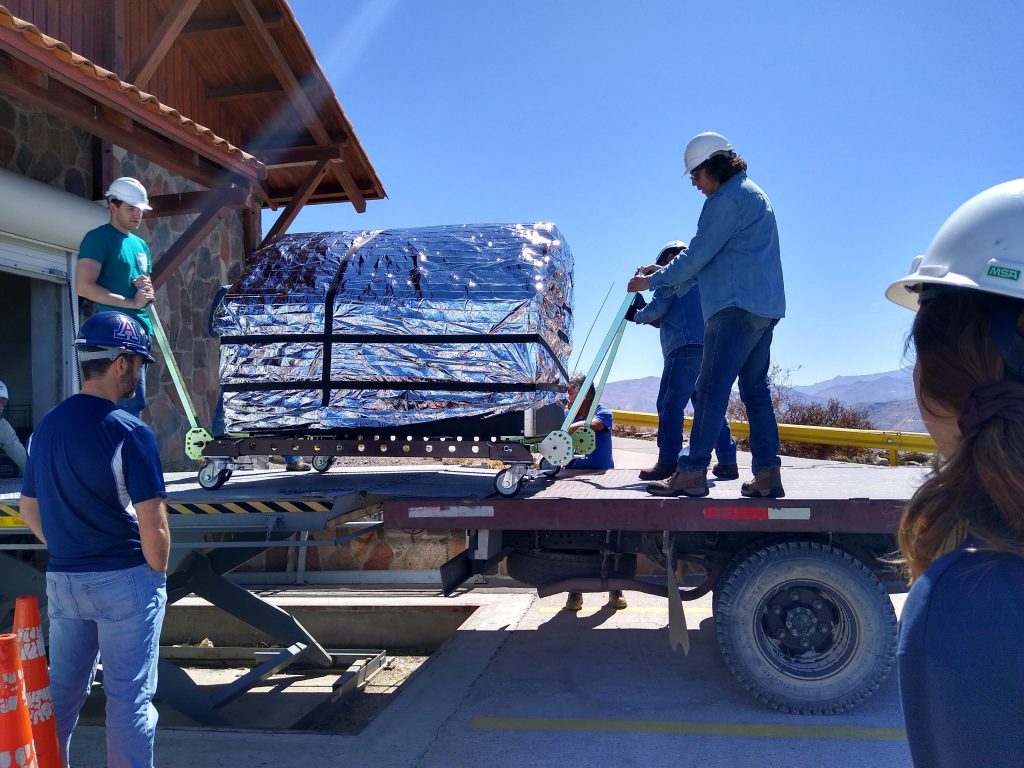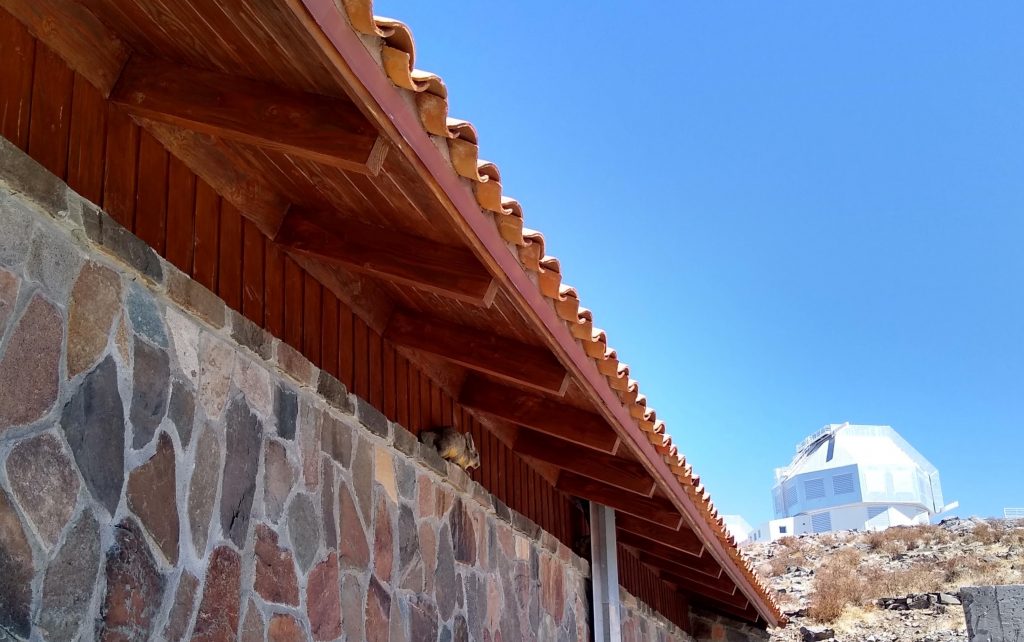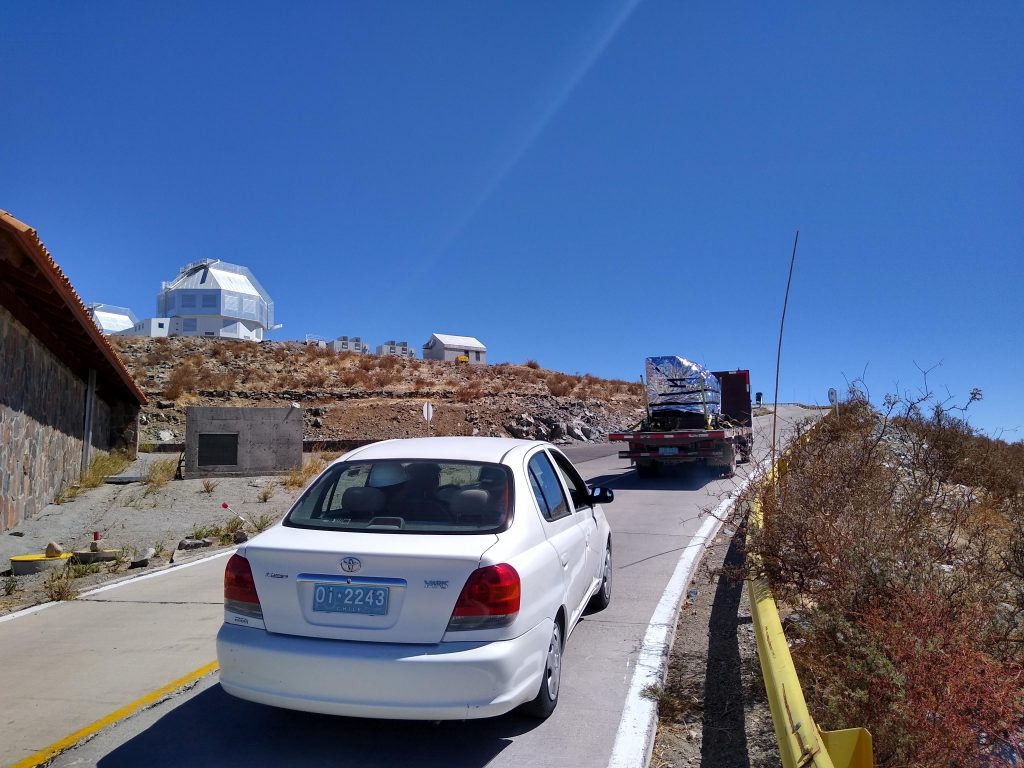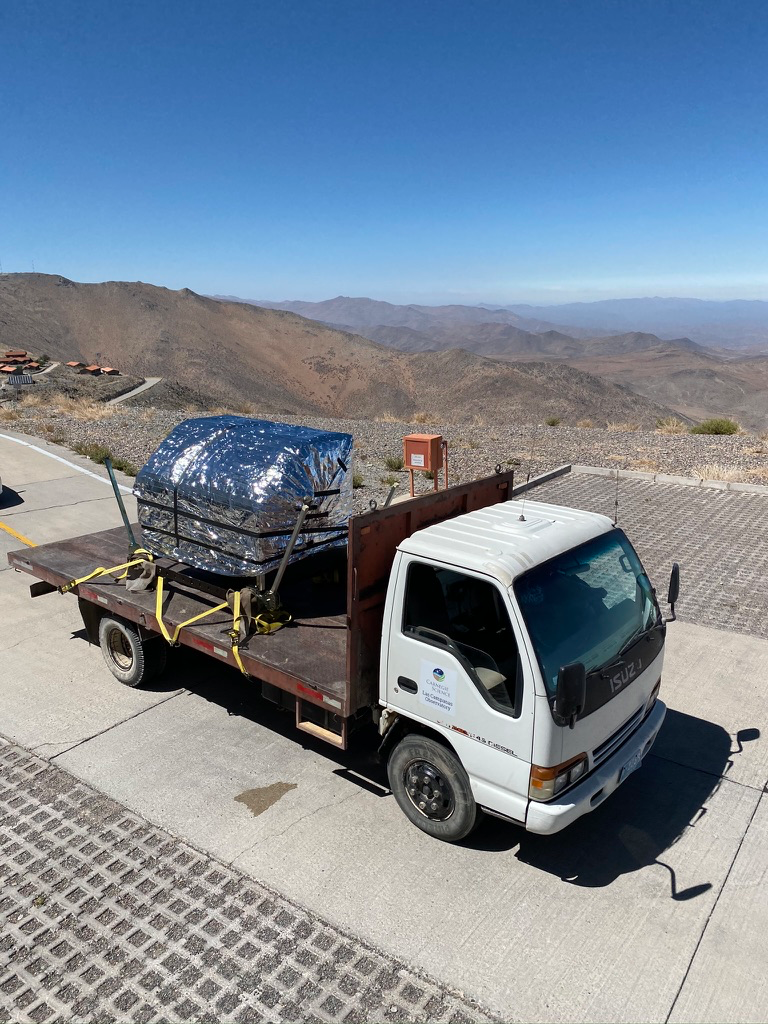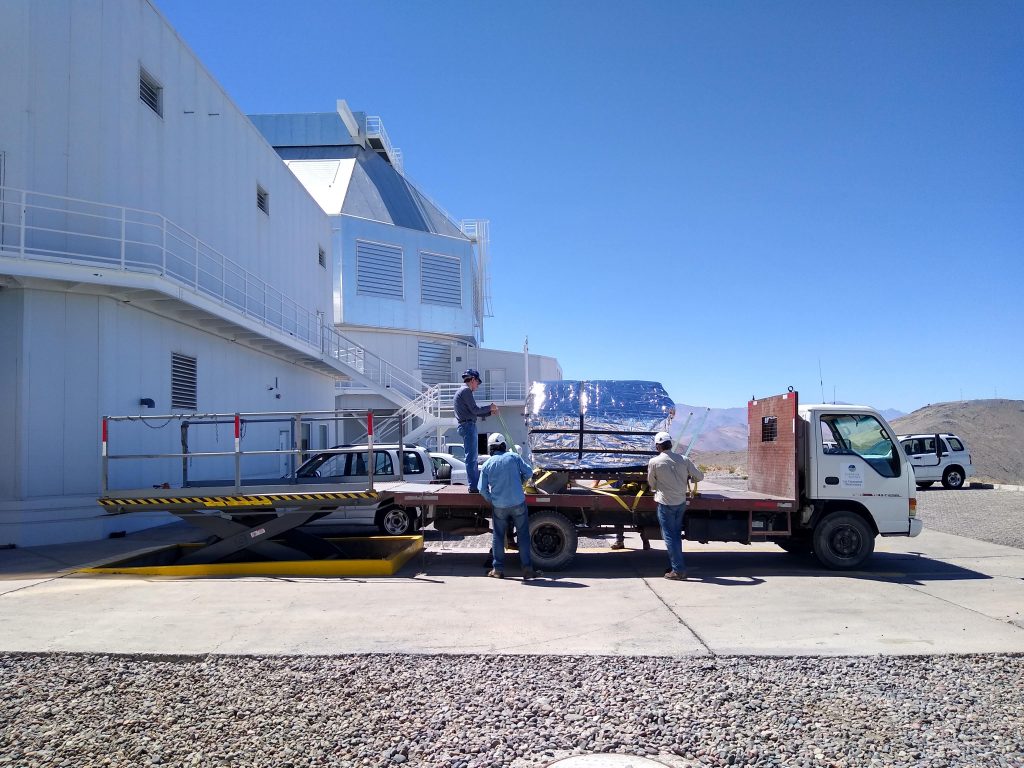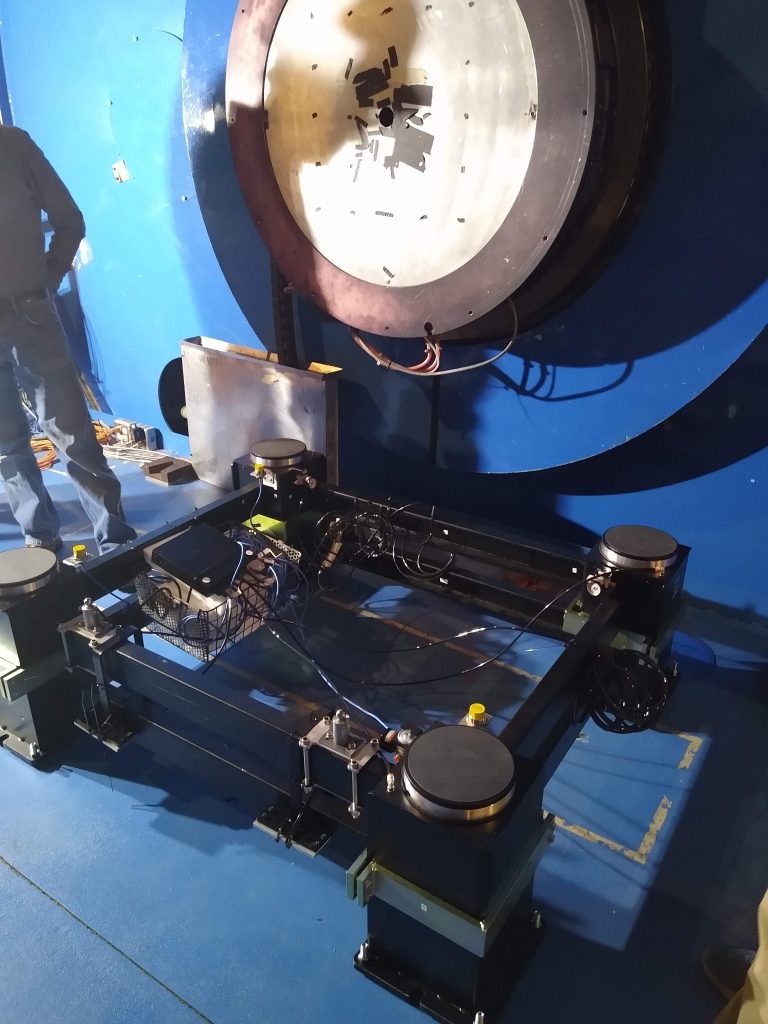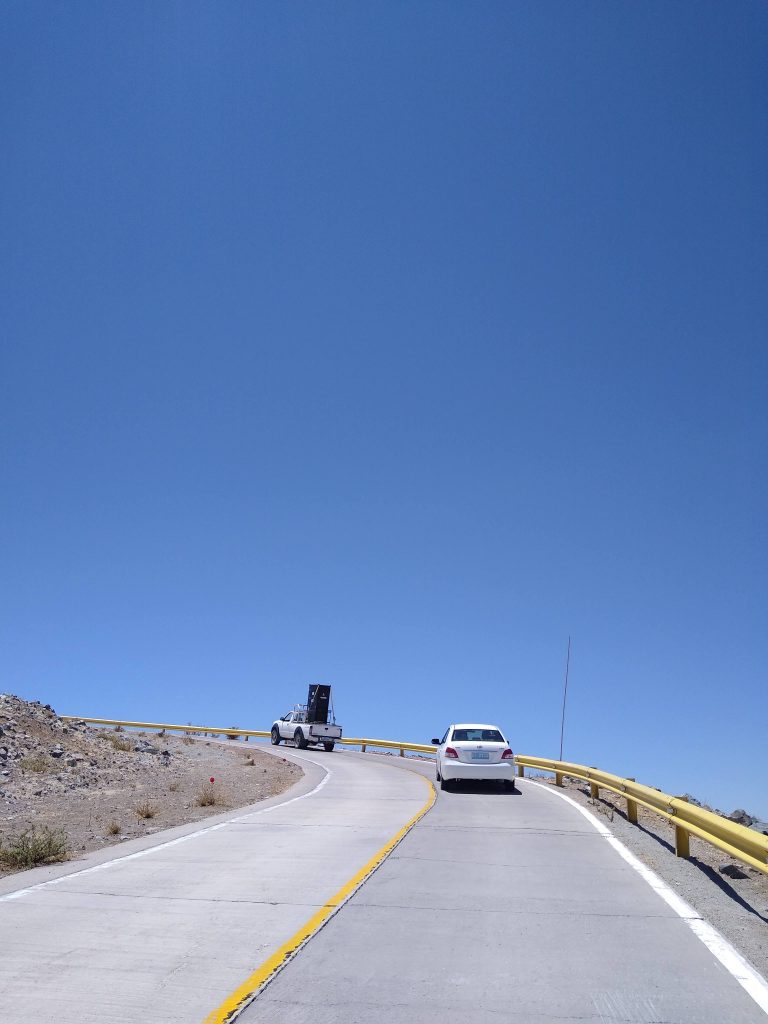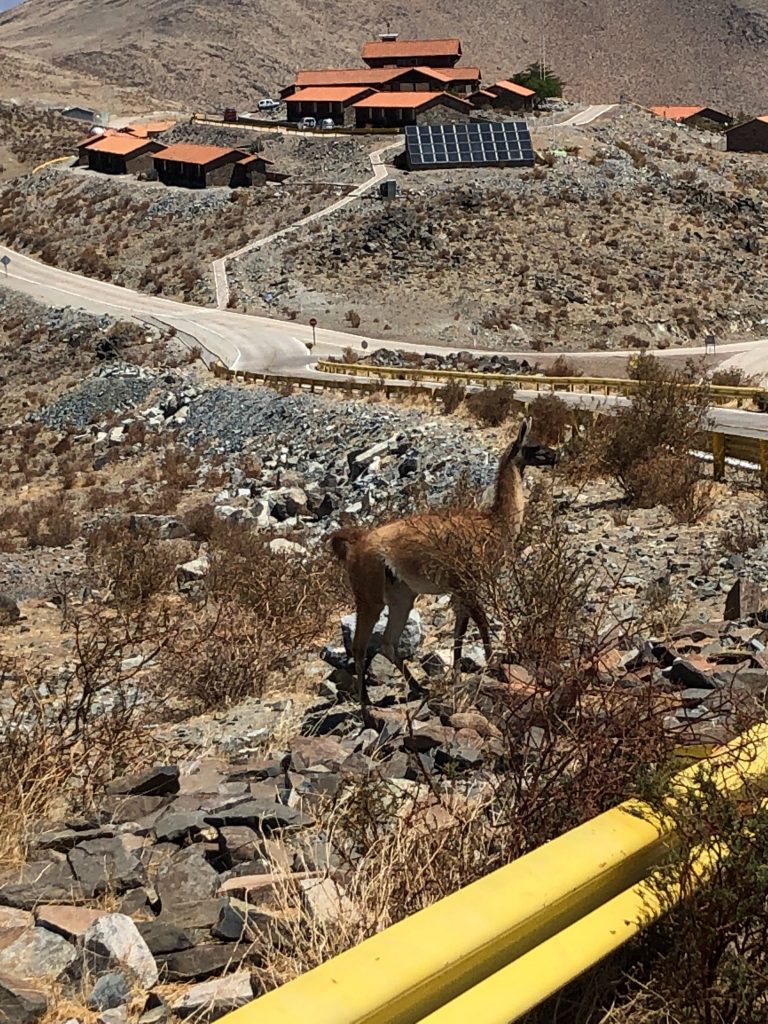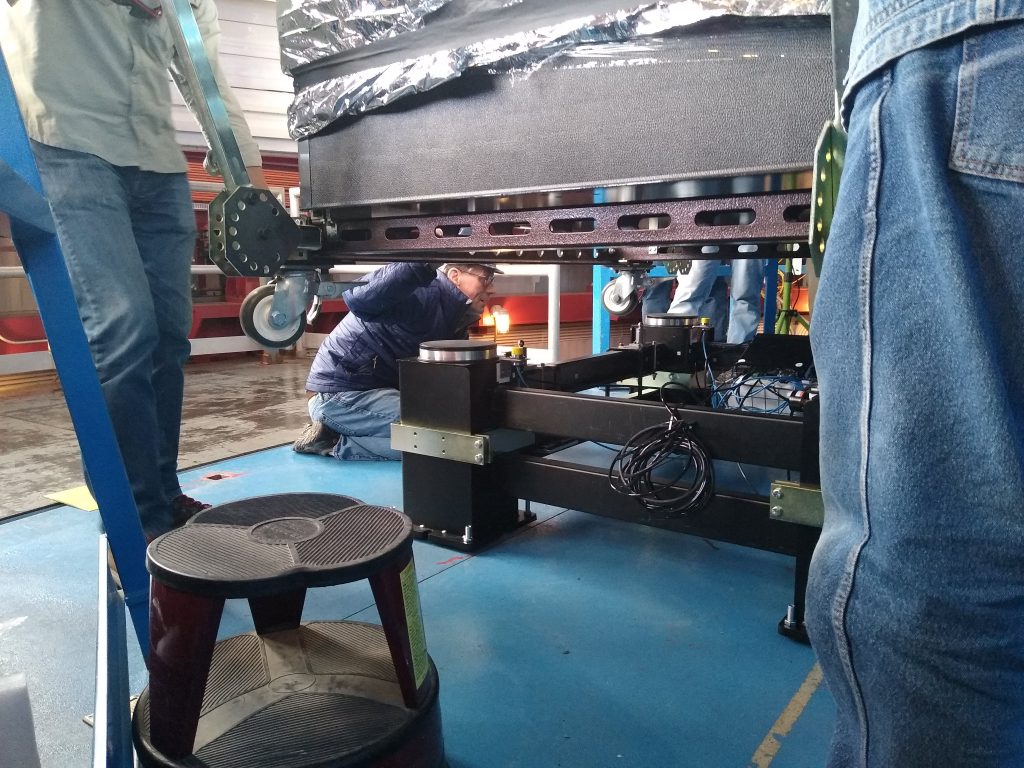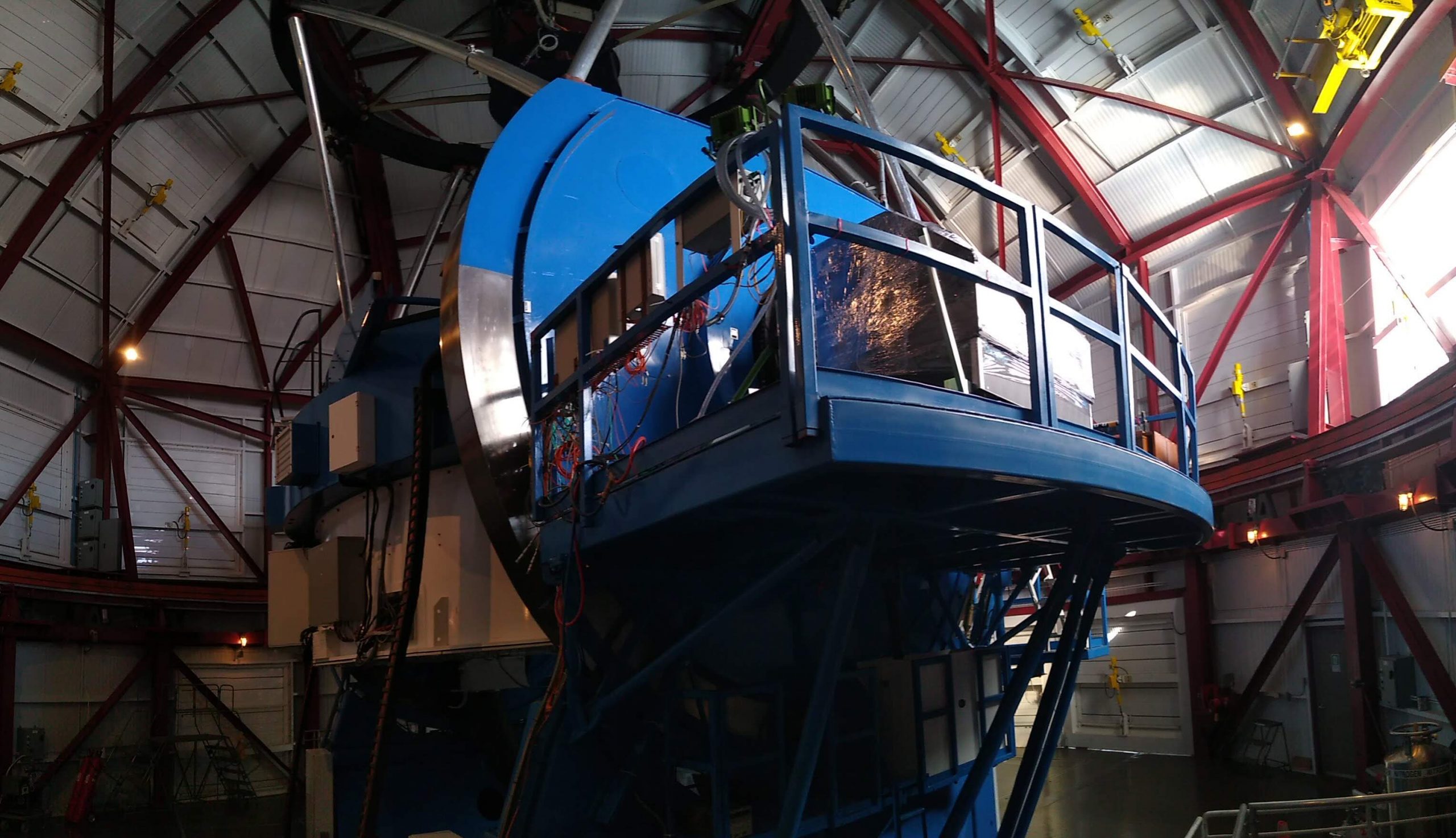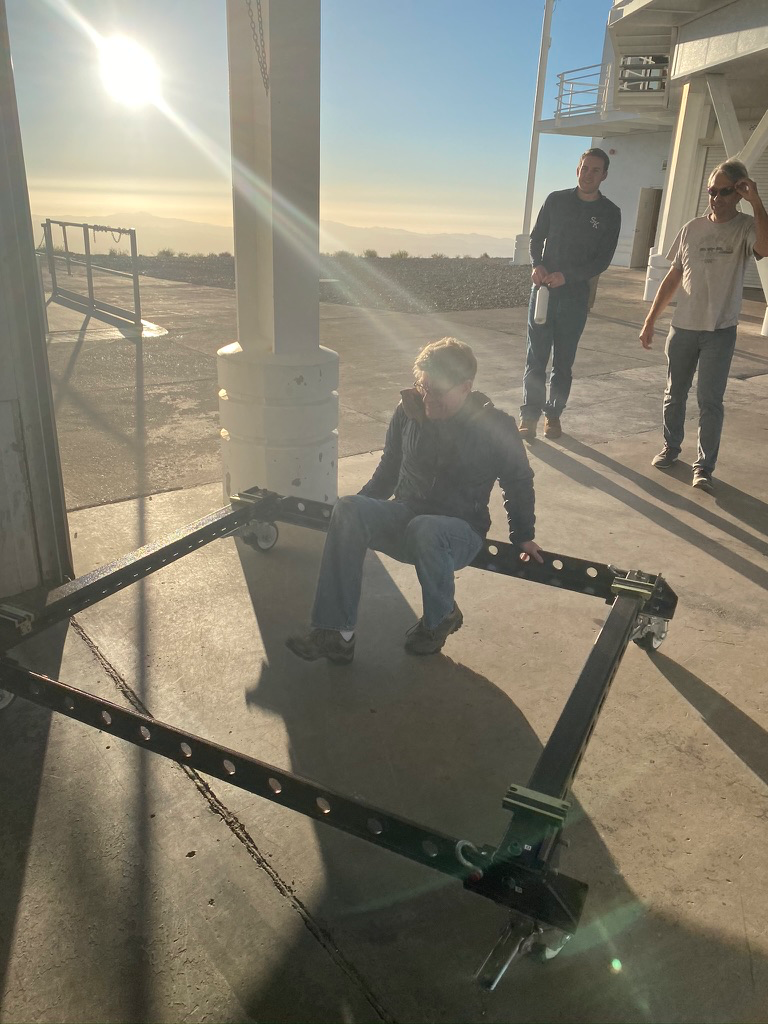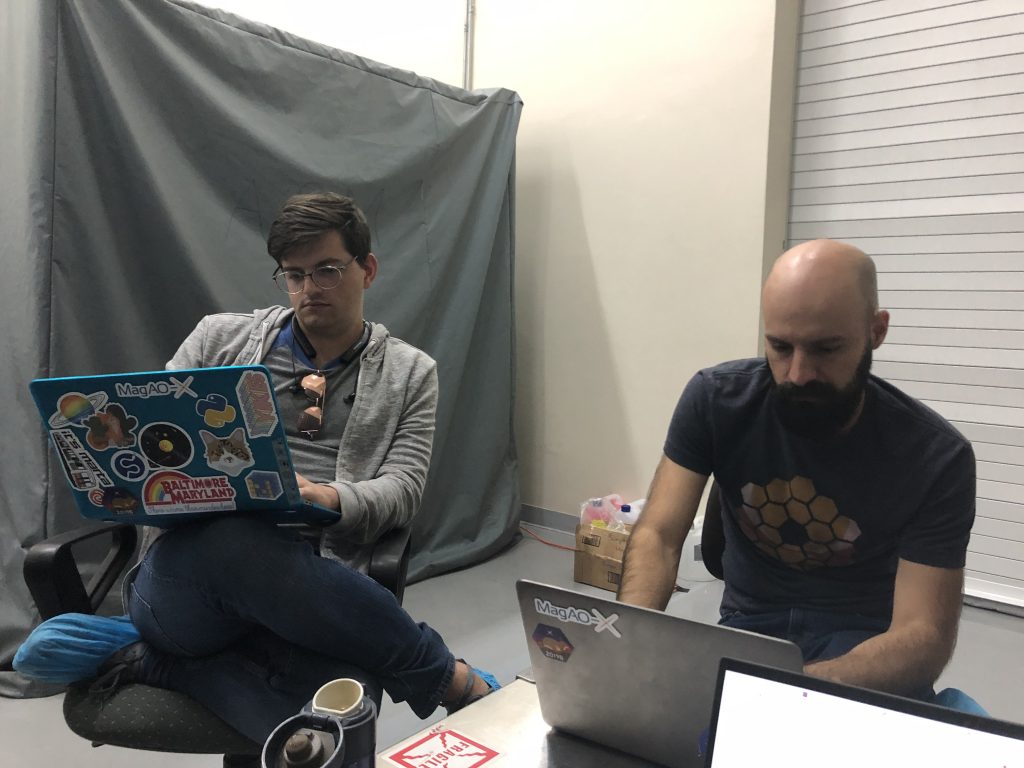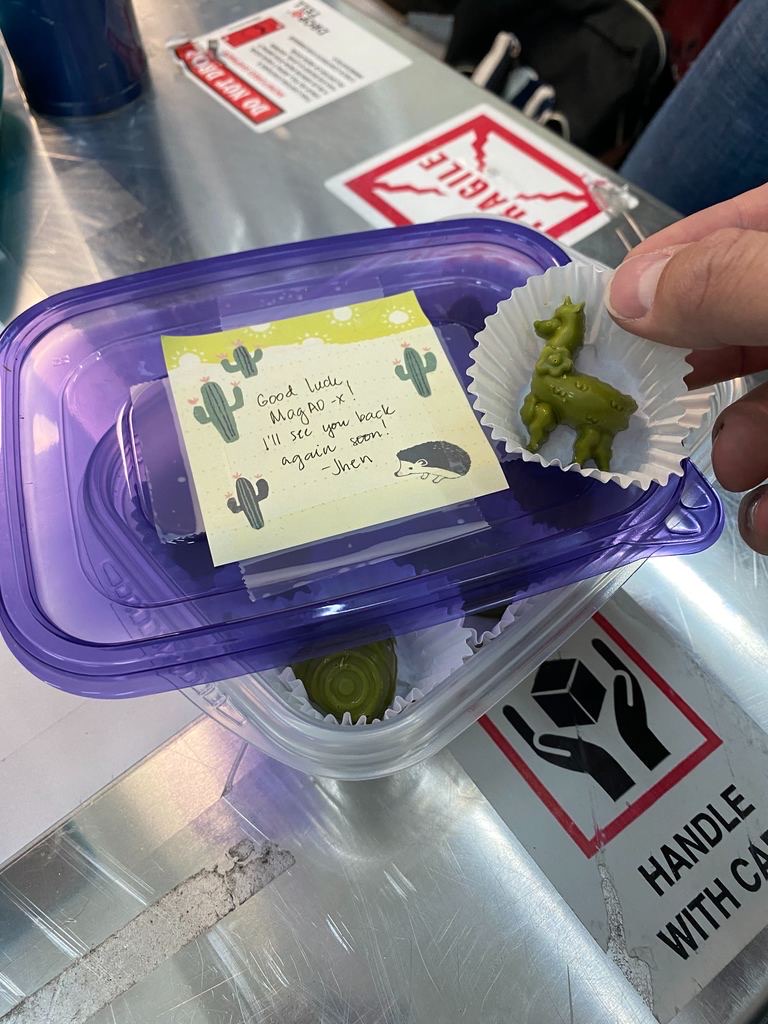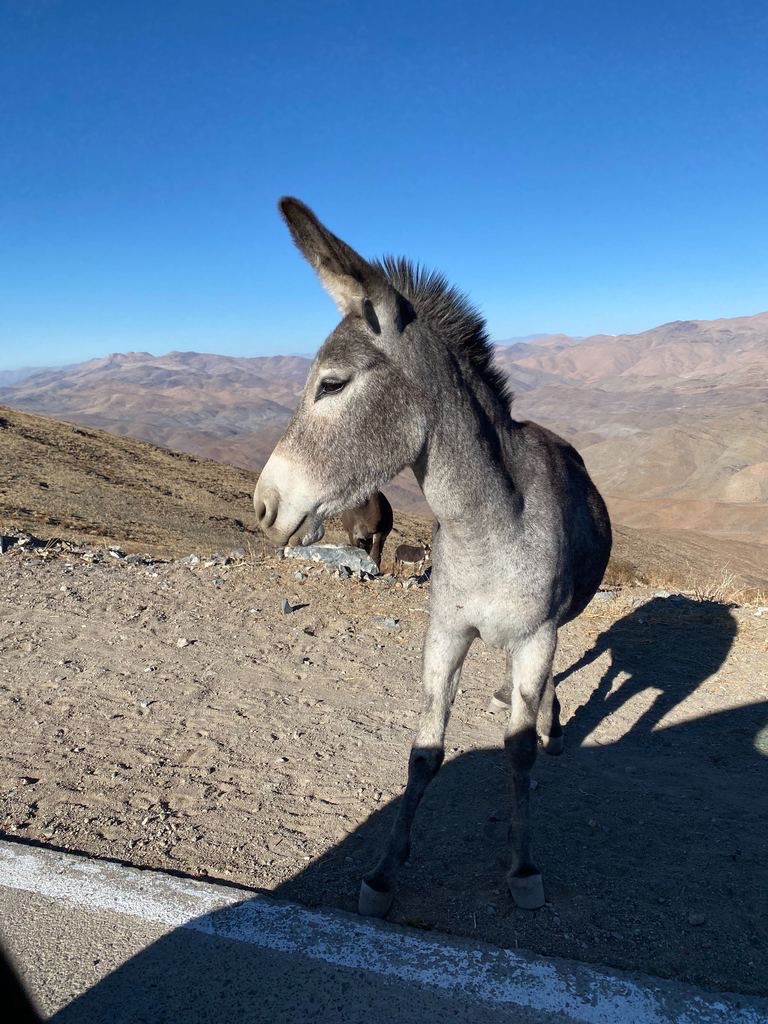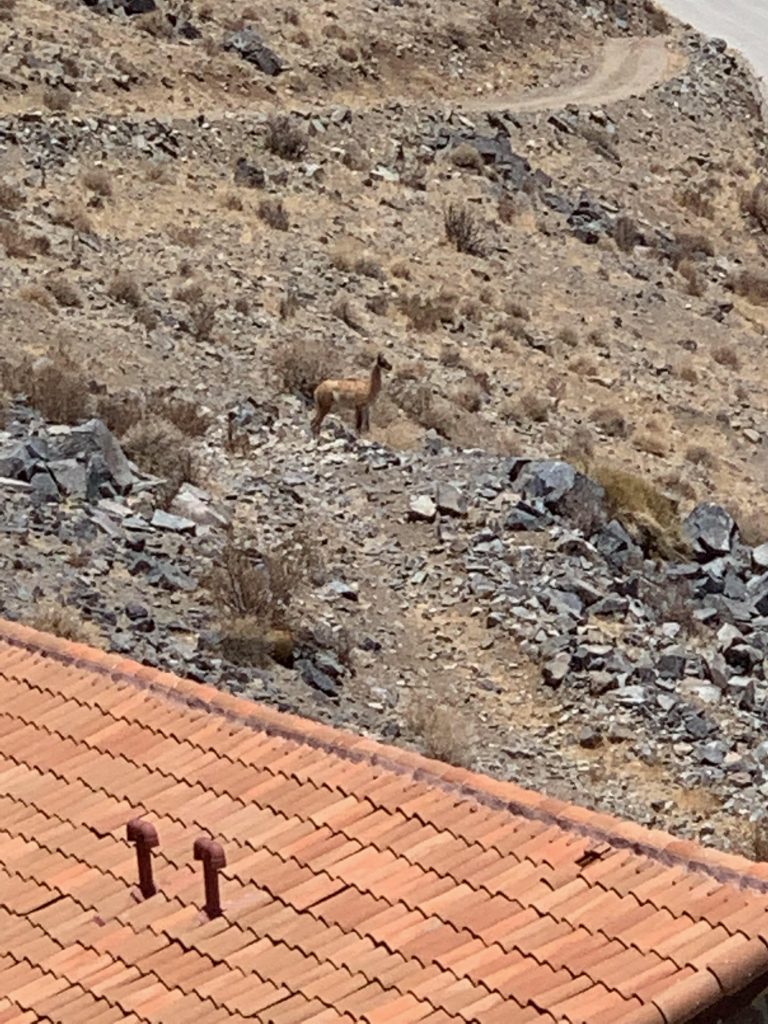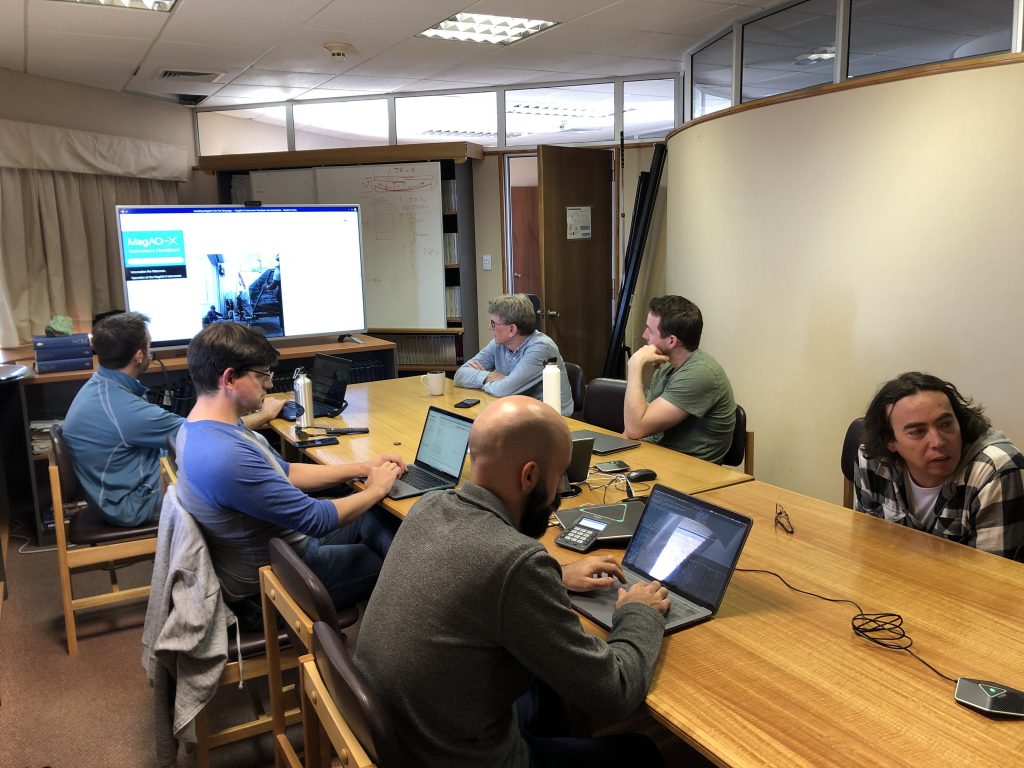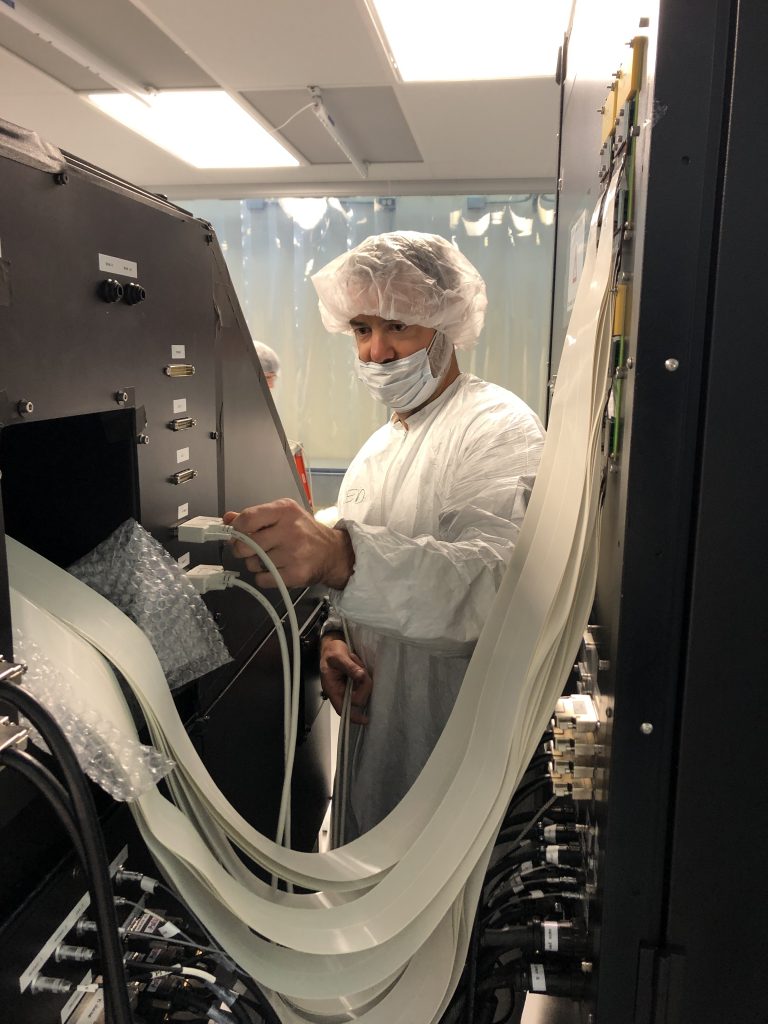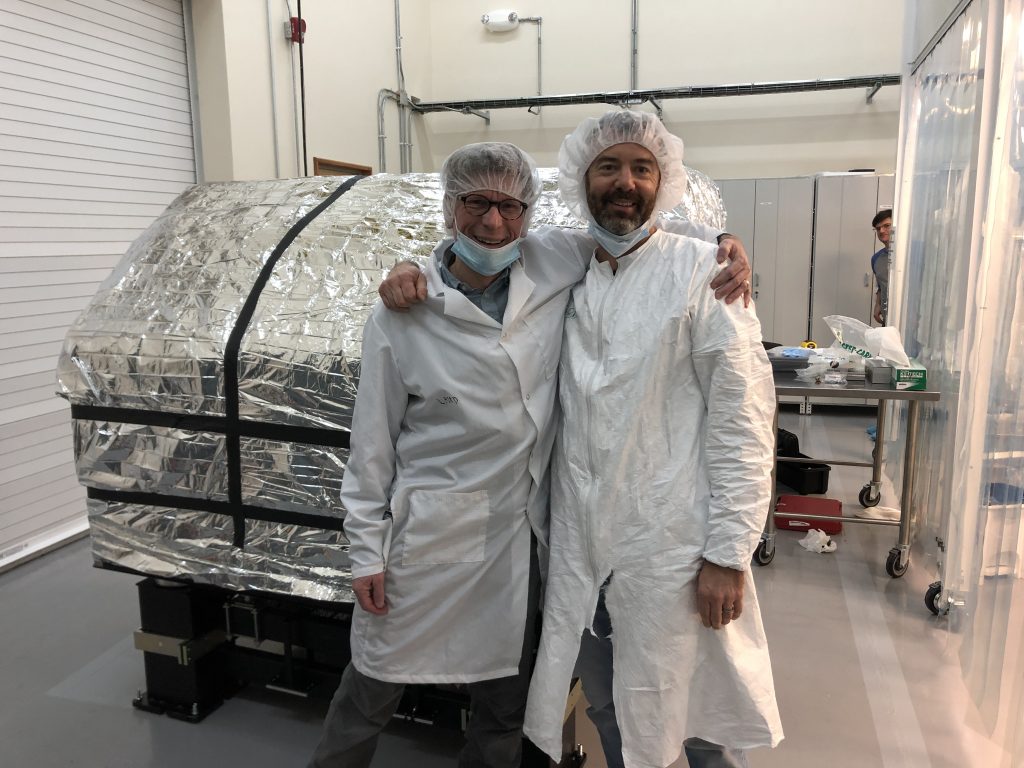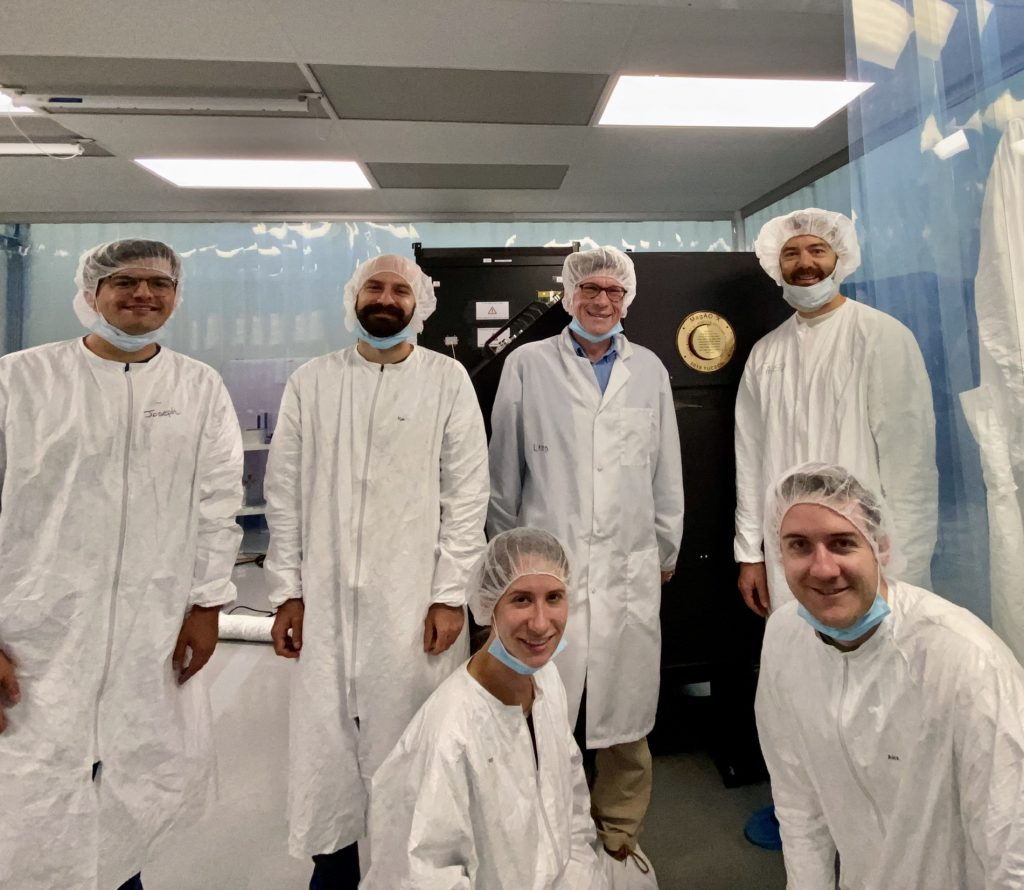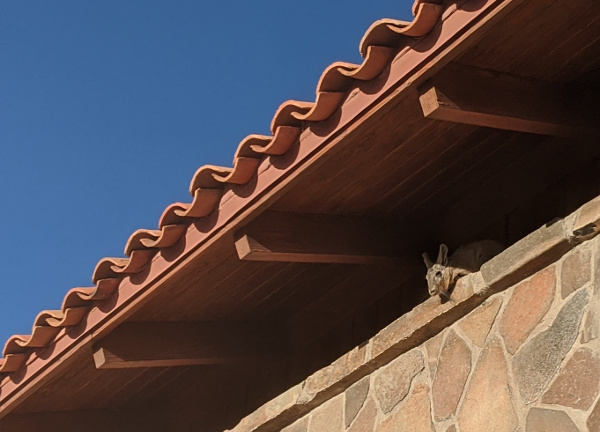Today (and tonight) is first light, the special time in every instrument project where you finally use it to look at astronomical targets instead of test light sources. This is also a twenty-four hour workday, with a full day of instrument preparation followed by a full night of observing and commissioning.
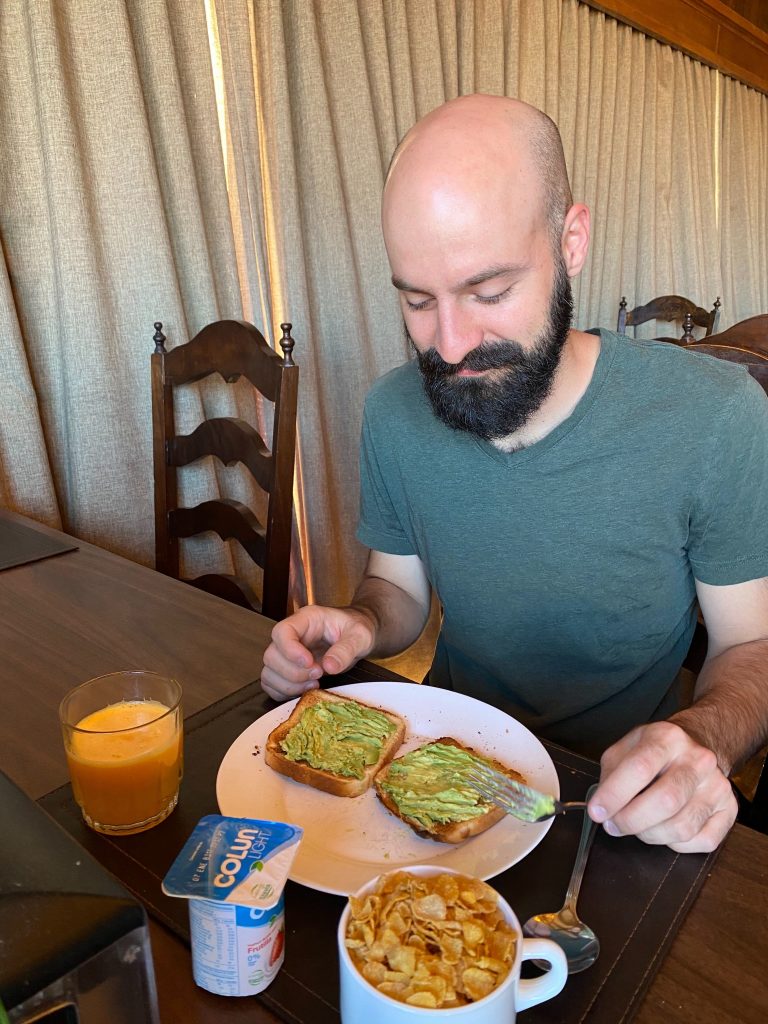
I suggested that Jared, as P.I., should write the blog. He suggested that, as the P.I., he was concerned with weightier things than blog posts. (Or, at least, that he should be.) Indeed, the MagAO/VisAO first light blog post was written by a graduate student.
I’m too tired to write good code, but I have mustered what’s left of my wits to bring you an account of MagAO-X’s first light night.
Last night, we held a meeting in the Aux (the auxiliary building that sits between Magellan Clay and Magellan Baade) where we planned a hilariously optimistic timetable for the day’s work. We’d be aligned to the telescope by lunchtime, have our electronics cabled shortly after, and use our copious free time to catch up on the software fixes and backlog of necessary functionality while we waited for sunset.
Needless to say, that did not happen on our schedule. It turns out that aligning an instrument that weighs a literal ton to a telescope is tricky. Laird, Alex, and Maggie sent a laser up to the secondary mirror and back to verify the alignment of the system, pivoting the entire optical table until the axes were aligned within … well, I don’t know the exact figure, but it’s not very many minutes of arc. Arcminutes are small, 1/60th of a degree each. (I tried to come up with a clever and easily-comprehended scale comparison, but I’ve been awake 24 hours and I leave this as an exercise for the reader.)
This (and other tasks) took us from morning until 10 PM, as these things tend to do.
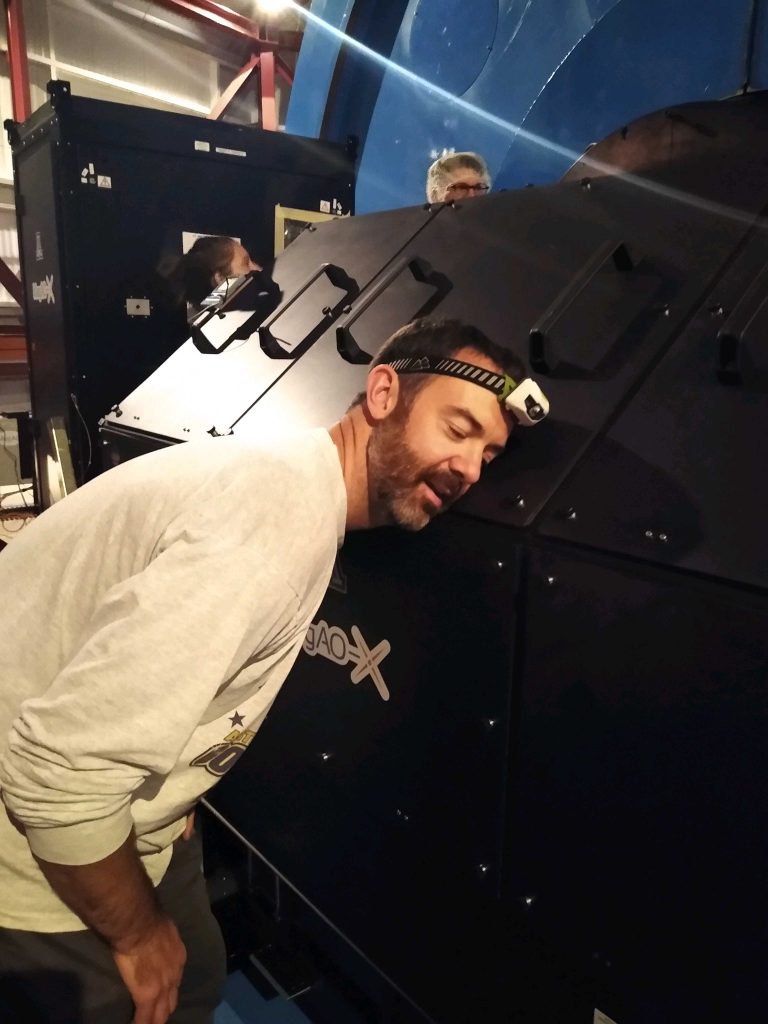
Once the table was locked in position, we had to connect the delicate DM cables. You wouldn’t think “plugging something in” would be a 4 person job, but each connector gets a wipe down with two different solvents, ESD protection equipment is required, etc. etc. Jared, Kyle, Alex, and I did that. Miraculously, the DM came alive with zero stuck or otherwise non-responsive actuators an hour later! This could very well have been a three or four iteration process, so getting it in one go was great.
Afterwards, we had to make the dome “shipshape” (did you know Jared was in the Navy?) by clearing the platform of discarded zipties, cleanroom gowns, grad students, etc. We ended up opening up to clear skies at 12:30 AM. Our telescope operator, Mauricio, had been patiently waiting since before sunset for us to get our show on the road, and I think he was glad we made it. (It would have been a sad night of telescope time if we hadn’t!)
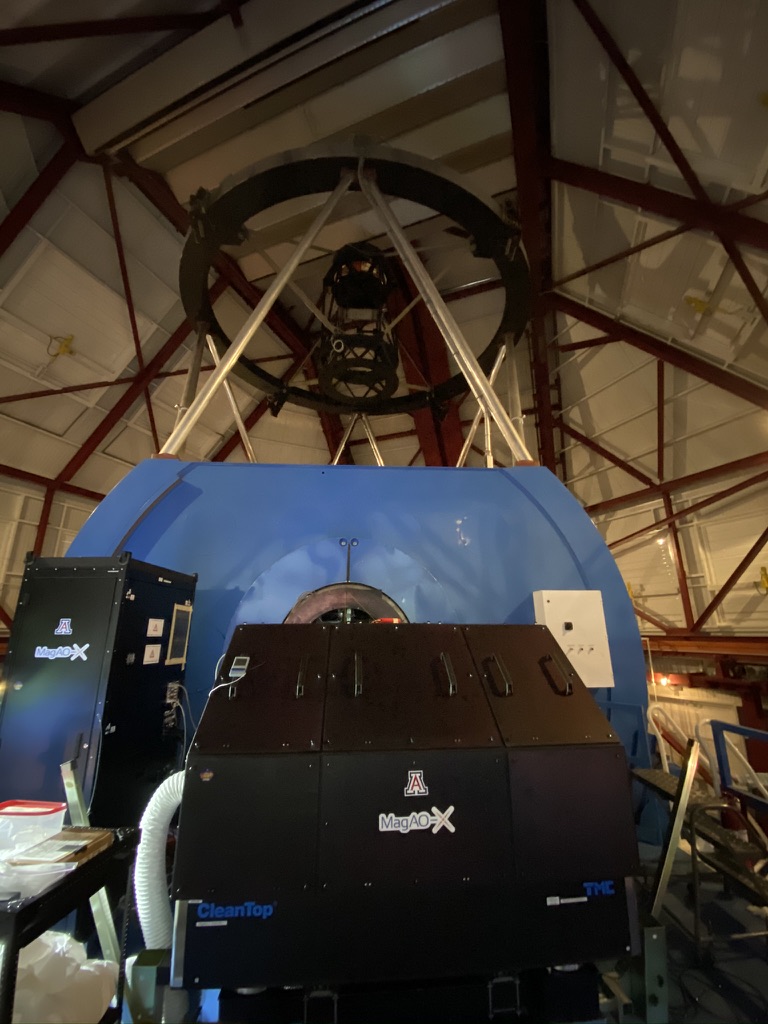
Next, we needed to get light down the pipe. Just because we’re fairly well aligned to the telescope doesn’t mean we know where a star will land on the detectors of a brand new instrument. Furthermore, we were offset a fair bit from the normal in-focus position, so a new offset had to be determined experimentally.
At 1:04 AM we had starlight on our acquisition cameras, and by 1:18 AM we had closed the AO loop on the “woofer” DM. Considering how many things have to work for this, getting it within 14 minutes on the very first try is practically unheard of. We had the MagAO-X / XWCL North team calling in via video chat to share in the experience.
While Jared, Olivier, and Kyle worked on boring stuff like making the AO loops correctly offload corrections to the telescope, I busied myself with far more important tasks in the MagAO-X Web GUI—like adding flames to the display that appear when the loop is closed.
I don’t wish to understate their accomplishment: they got us running in closed loop on our woofer, tweeter, tip-tilt mirror, and the telescope itself (via pointing and focus offsets).
I on the other hand… well, see for yourself.
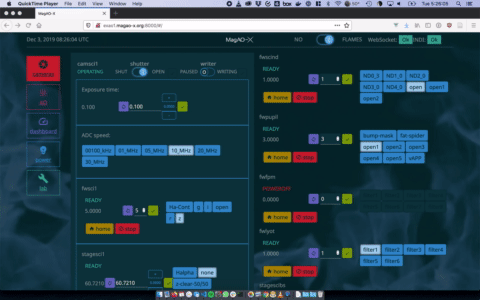
With that essential functionality implemented, I took a break, along with Laird, Maggie, and Alex, to enjoy the Milky Way and southern sky. However, we were besieged by goats.
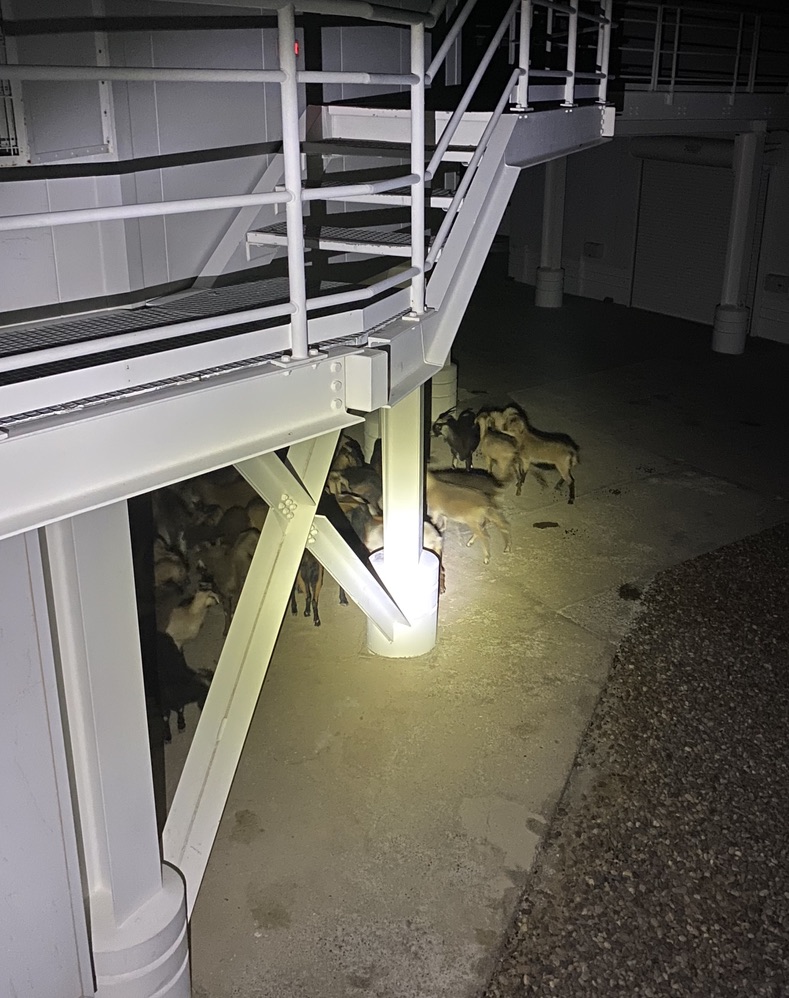
We were so excited by the actual moment of first light that we didn’t do the best job of documenting it for you, gentle readers. Maggie, the hippest member of the group, did capture it for her Snapchat story, however:
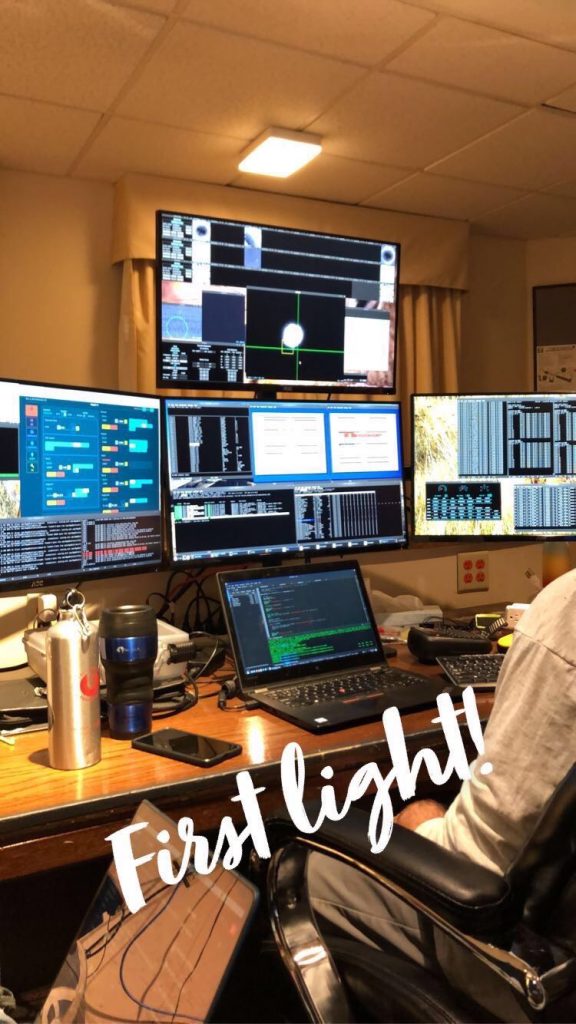
And I had the presence of mind to video the acquisition of our first star (but then neglected to video its appearance on the higher-resolution science-grade cameras):
When I came up to the control room at sunrise, I was surprised to find our telescope operator politely insisting to Jared that it was actually time to close the dome and stop working. (Well, not that surprised. Observers are always pushing their luck with the sun!)
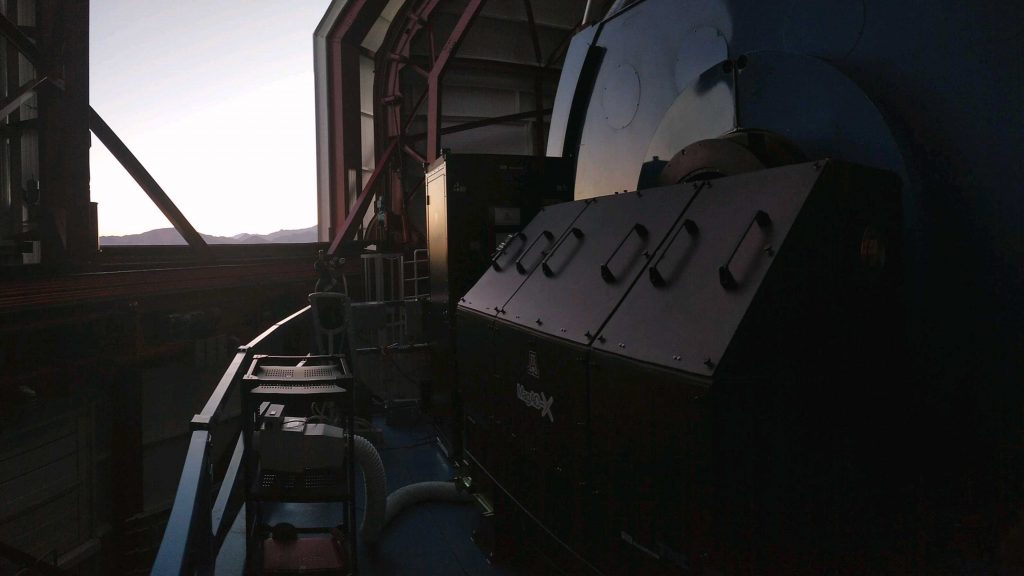
This was the first of four nights of MagAO-X commissioning. I think we acquitted ourselves pretty well, all told. Fortunately, as you can see, our P.I. is no stranger to the adaptive optics game.
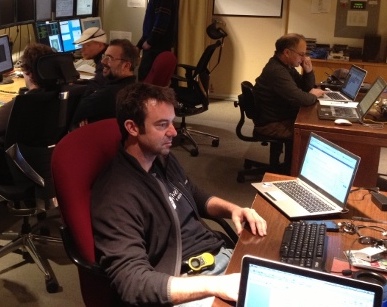
The Clay control room on MagAO’s first light night. 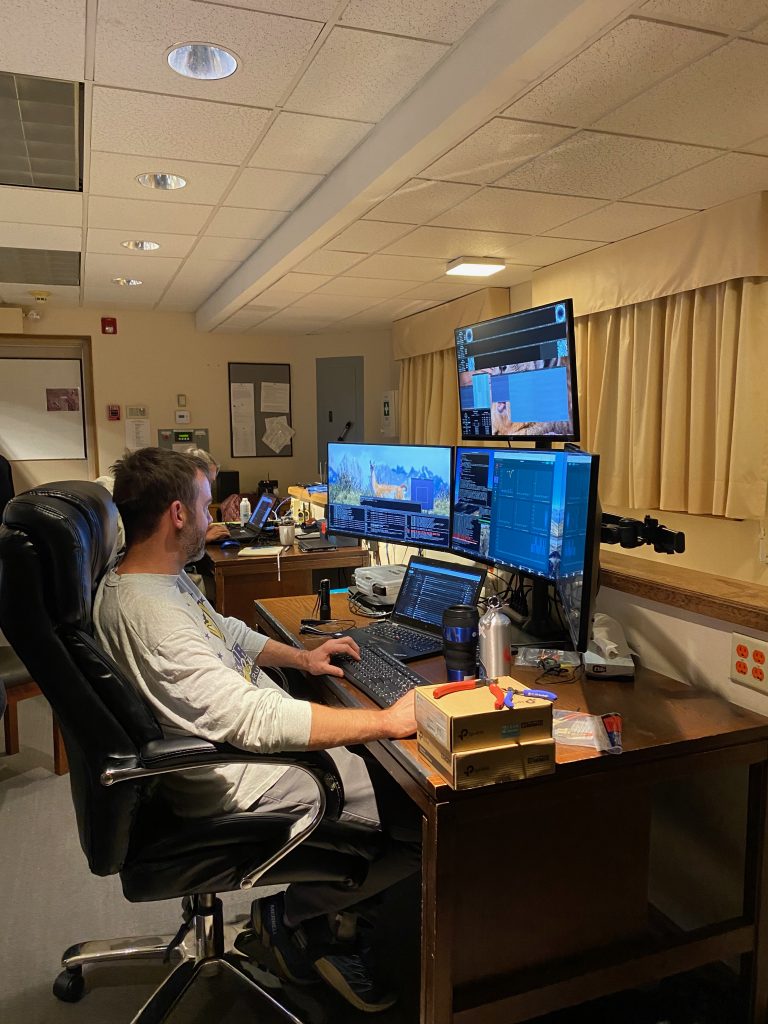
The Clay control room on MagAO-X’s first light night.
In accordance with MagAO-X 2019B Blog Rules, today’s song of the day is Counting Stars by OneRepublic. (A repeat, apparently, but not since 2015.)
